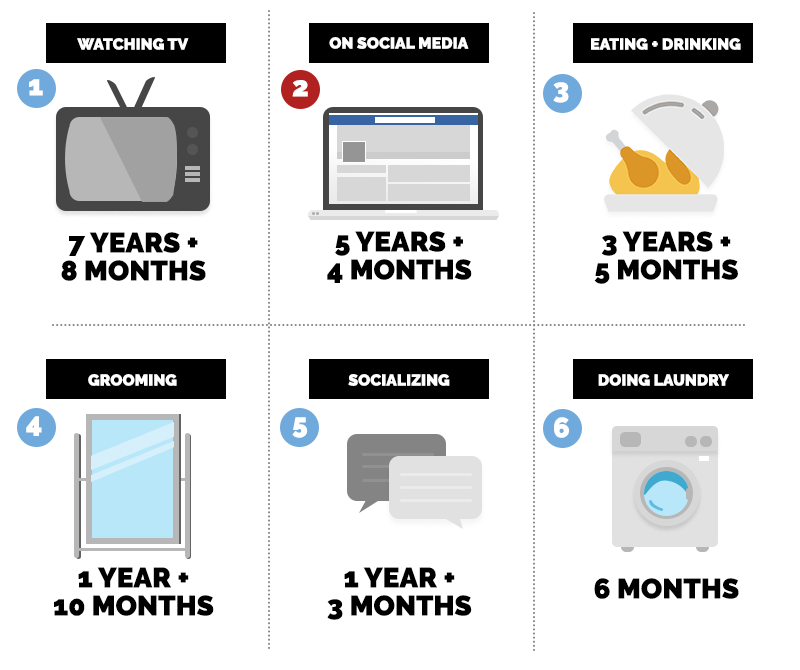Jamie Jean Schneider DommDigital Strategist for the North American Division Digital discipleship and evangelism are ways to activate the social influence of a church membership, building bridges to the local community, developing a meaningful understanding of felt needs, and determining relevant ways to serve the community (both in and outside the church). It's also a strategy to scale up friendship evangelism and empower individuals to be actively involved in the larger goals and mission of your church. It’s a way to reach seekers, especially young seekers.As of 2017, the average person spends around two hours a day on social media, which adds up to 5 years and 4 months spent over a lifetime. When social media was ranked against other daily activities, it revealed that the average person will spend almost three times as much time socializing on social media as opposed to socializing in person. The average adult spends most of their waking hours behind a screen for work, entertainment, education, and socializing. These averages are across all age demographics. When we only look at people under 30, a dramatic increase in social and screen time spent is observed. Teens can occupy upwards of 9 hours a day on social media or behind a screen. However, millennials can spend up to 18 hours a day consuming media in the form of movies, podcasts, social media, video games, reading, etc. This is an astounding amount of time spent on digital devices. Research studies vary, but it’s clear that increased use is only limited by the confines of a 24-hour day, and basic human needs such as sleep. Only 20% of Americans regularly attend church, and only 2 in 10 millennials consider regular church attendance important. If we consider time spent “in church,” a member who attends twice a week for a worship service and one other event only engages for four to five hours a week. How we respond to this reality either represents a challenge or an untapped opportunity. These statistics may seem bleak for our mission, but there’s another way to look at the situation. How can we reach the 80%? Simple. We go and meet them where they spend their time, not where we want them to be. We have nine or more hours a day to connect with them. Part of this effort must utilize digital technologies to better understand behavior and needs before creating programs or resources that satisfy our assumptions about our target audience. People are googling for God. Each year there are millions of Google searches for answers to questions like:
Thirty thousand people search the keywords “church online” every month, and they mostly find opportunities to watch people in a building. People searching for answers need more than a program to watch. At any given time, 22-28% of people are in crisis in the United States and Canada, says Samuel Neves, Associate Director of Communications, General Conference of Seventh-day Adventists. This amounts to 80 million+ people who need support. Crisis can be defined as loss of a loved one, illness, divorce, loss of a job, depression, drug addition, food insecurity, etc. For those who search for answers and comfort online, who is there to answer their questions and help them spiritually? In addition, Neves says, the two main content categories people search online alone are religion and pornography. Both search categories are related to the need for relationships and connection. How can we steer seekers in a healthy direction? 90% of surveyed people have used social media to communicate with a brand, and millennials prefer to reach out to an organization via social media rather than traditional channels like phone or email. This brings me to my next point: not everyone is ready to come to church; some are not even ready to discuss their issues in person. Over four million people visit North American Division church/ministry websites each year, and countless more engage on social media. The Church can be a voice that answers back to those seeking help through these channels and help open a door for a seeker’s spiritual experience. The digital mission field is vast and not restricted by geographical locations. 42% of the world’s population is on social media, and 77% of Americans are on social media. Every inhabited continent is represented in the digital space. While Christianity is on the decline in the West, it has never been easier to reach people. I believe the next Great Awakening will be a digital one, and reaching the digital mission field is our generation’s great commission. Therefore go and make disciples of all nations, baptizing them in the name of the Father and of the Son and of the Holy Spirit, and teaching them to obey everything I have commanded you. And surely I am with you always, to the very end of the age (Matthew 28:19-20). Comments are closed.
|
Archives
August 2020
Categories
All
|
- Home
- BLOG
-
RESOURCES
-
RESOURCE MENU
>
- ADVENTIST IDENTITY GUIDELINES
- BIG DATA RESOURCES
- BRANDING, IMAGE & DESIGN RESOURCES
- CHURCH/MINISTRY SPECIFIC RESOURCES
- COPYRIGHT & TRADEMARK BASICS
- COURSES
- EMAIL RESOURCES
- GUIDANCE FOR HIRING SOCIAL MEDIA POSITIONS
- PODCASTS
- REPORTS & CASE STUDIES
- SOCIAL MEDIA RESOURCES
- (SOCIAL) VIDEO RESOURCES >
- TEXTING 4 CHURCHES
- TRACKING & ANALTYICS
- WATCH VIDEOS & TUTORIALS
- WEBSITE TIPS
- SOCIAL MEDIA GUIDELINES
-
RESOURCE MENU
>
- SEO
- Digital Discipleship & Evangelism
- COVID-19 RESOURCES
- eNEWSLETTER





 RSS Feed
RSS Feed